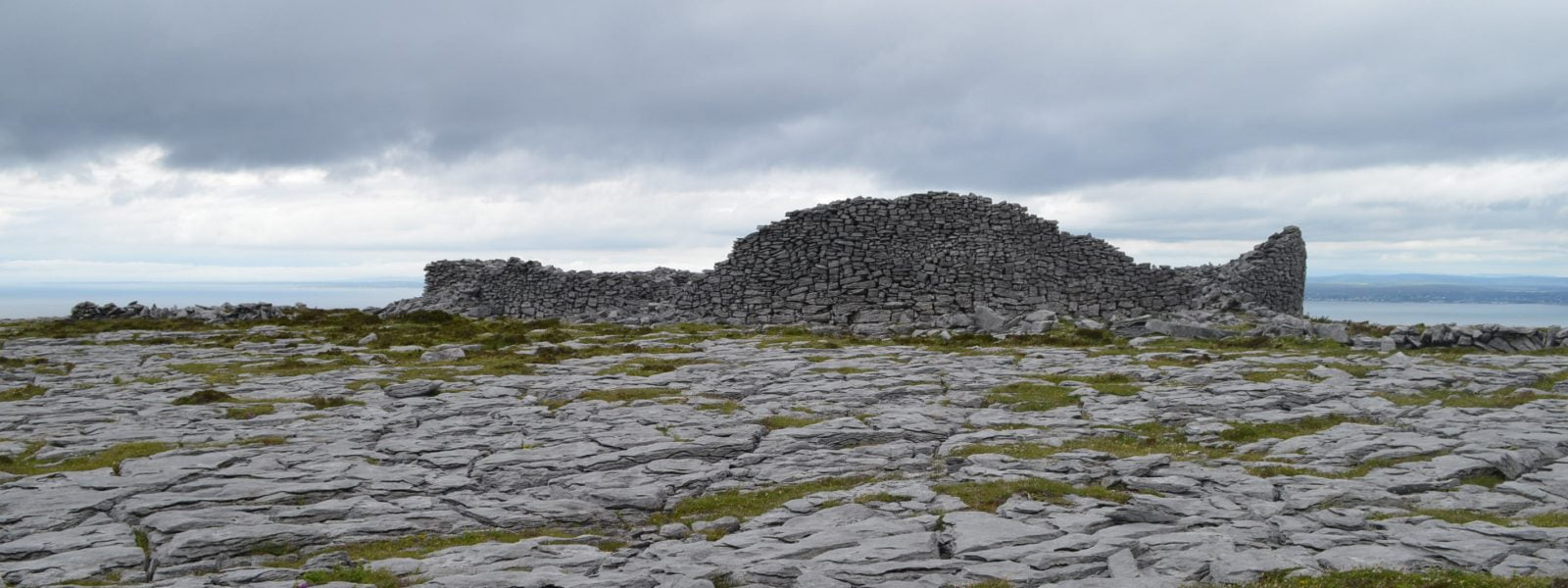Ireland is known as the emerald island due to its lush green landscape. However, there is one exception to this rule and that is an area called “The Burren”. The Burren National Park adventure is a vast karst topography that is located in western Ireland at Burren National Park.
After I saw the sights in Dublin I drove across the island to spend a few weeks at a seaside villa in County Clare. My villa was located in a small town called Liscannor. I was planning to take full advantage of Liscannor’s ideal location. Indeed, the Burren National Park adventure was on the top of the list of best things to do in Co. Clare Ireland.
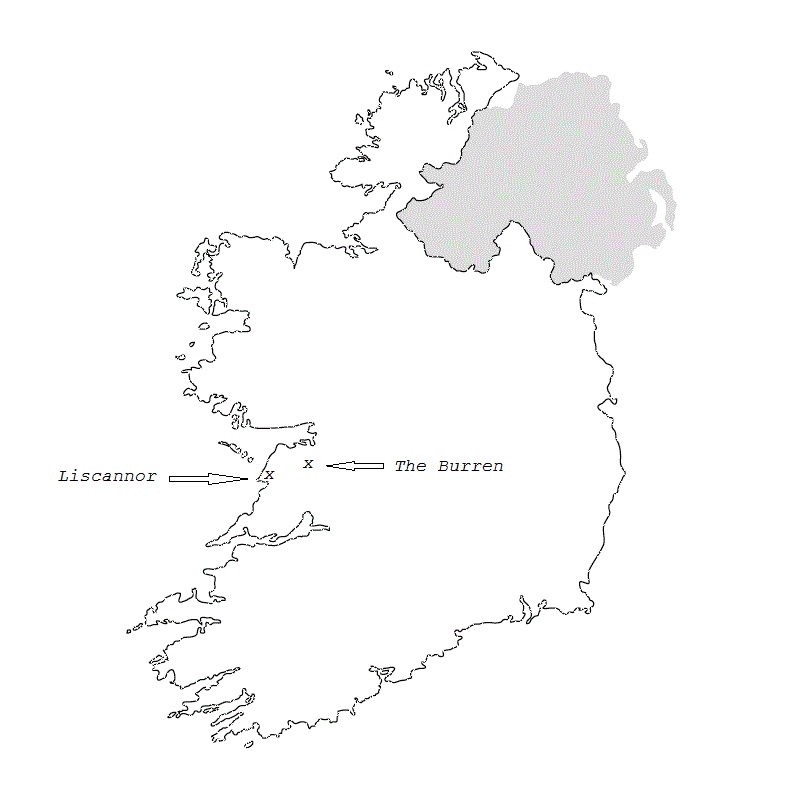
The Burren National Park Facts and History
In general, karst formations are a common rock landscape found around the world. Their most notable characteristic is the malleability of the rock which leads to very interesting features.
The limestone formations that make up the Burren National Park landscape were born in a tropical sea over 300 million years ago. Remnants of sea life such as corals and molluscs built up over millions of years. As a result, what remains today is a vast limestone formation which is over 800 meters thick and 250 sq kilometers in area.
In this area a primary geological factor that sculpted the landscape was glaciation. Beginning about a million years ago there was a succession of ice ages which caused glaciers to advance and retreat across the landscape of western Ireland.
As a result, there is a vast sweeping landscape that is easily accessible from the coastal road in NW County Clare. The hiking opportunities here are tremendous, you simply park your car on the side of the road and head out. See the photos below to get a better idea.

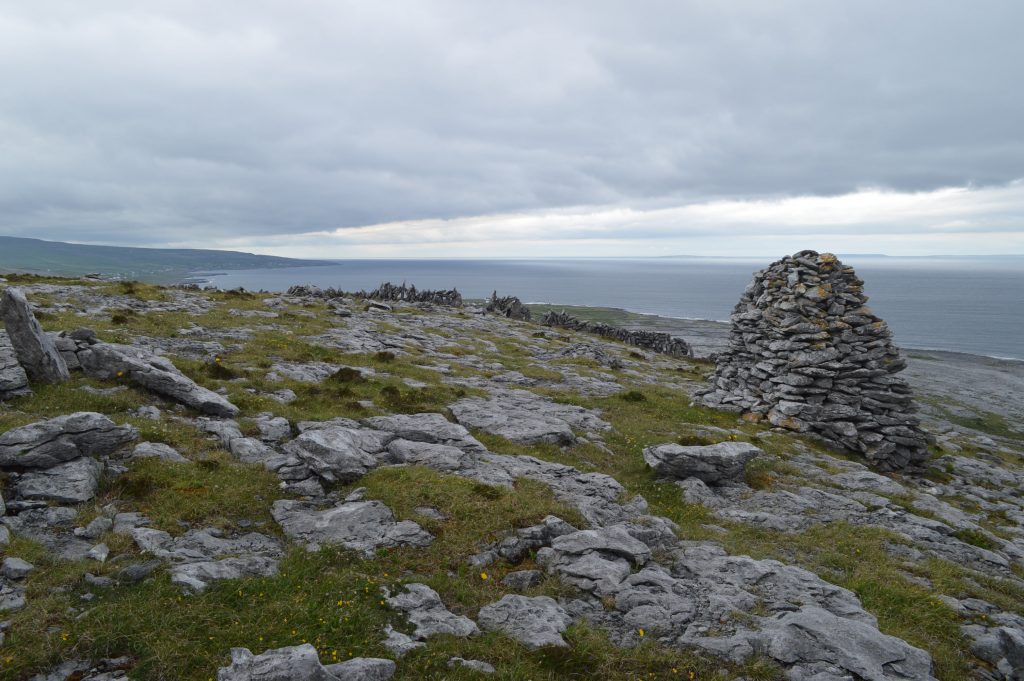
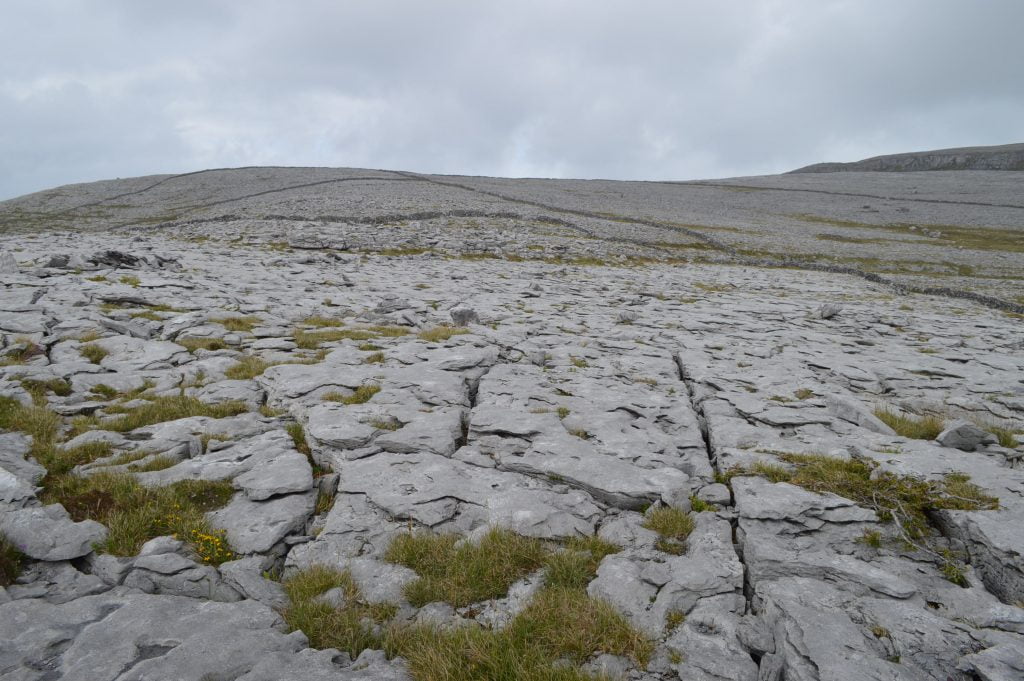
Ringforts at Burren National Park
Evidence of human civilization dates back at least 6,000 years in this area. Therefore, the remains of ancient stone houses still dot the Burren National Park landscape. The houses are in the form of “ringforts”. Basically, they are stone fences which surround the house.
However, the remnants that can still be observed are mainly the stone fences and enclosures. This is because the houses were likely constructed of material which was more easily eroded.
However, it makes for some interesting hiking and it is easy to fill in the blanks.

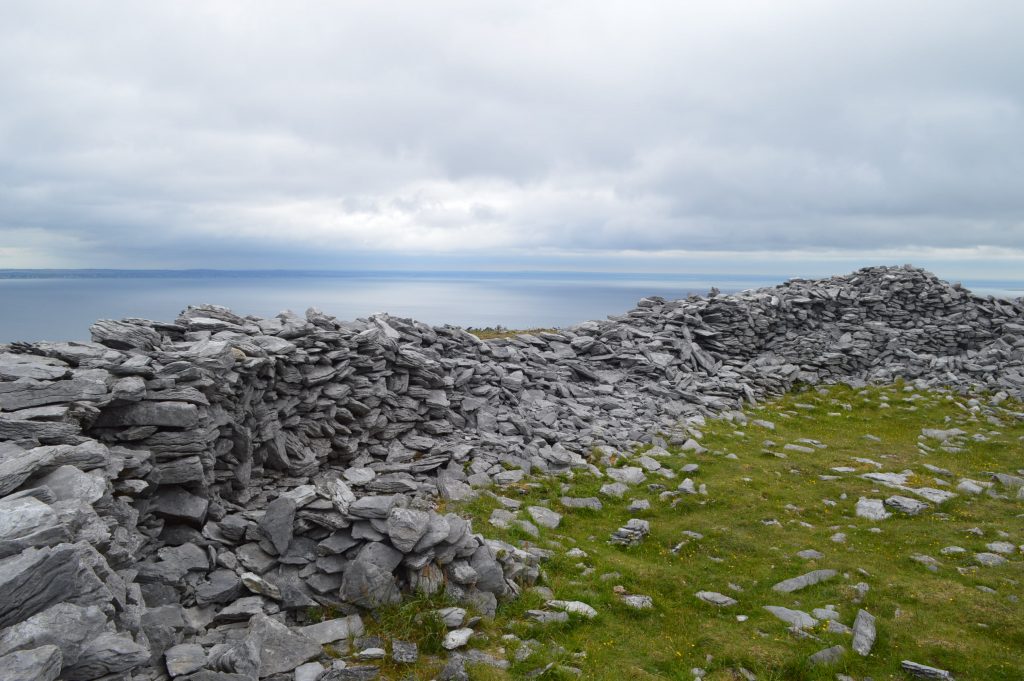
Cairns at Burren National Park
Additionally, there are rock monuments called cairns which are artificially constructed mounds of rock. The purpose of the cairns is usually to mark an ancient grave site.
Unfortunately, there was no tombstone and I did not have a guide with me. Therefore, I don’t know much about this particular cairn. However, this location on the Burren would be an ideal place to be laid to rest.
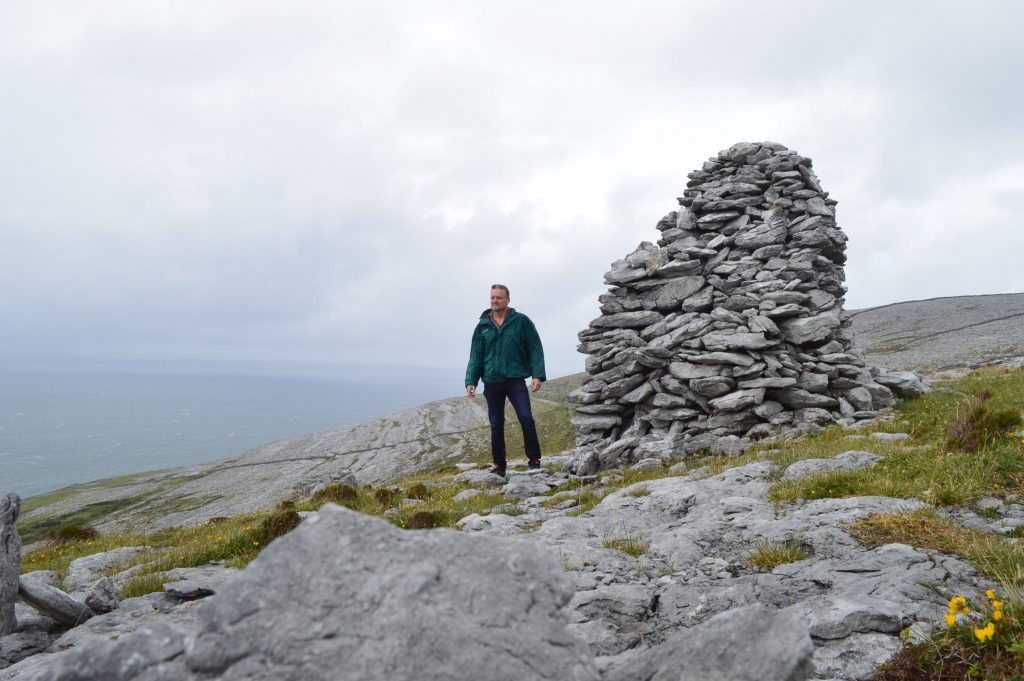
Stone Fences at The Burren
Last but not least there were the endless lines of fences segregating the landscape. These stone fences are seen throughout County Clare dividing up the land. Basically, the stone fences were built as a matter or practicality.
The stones were abundant and they made farming very difficult. Therefore, they made ideal fences and at the same time you could clear some of the stones off the land. Hopefully, this would make more room for grazing and perhaps farming.
However, this particular area of The Burren was pretty bleak and I imagine it would have been extremely difficult to grow anything here.


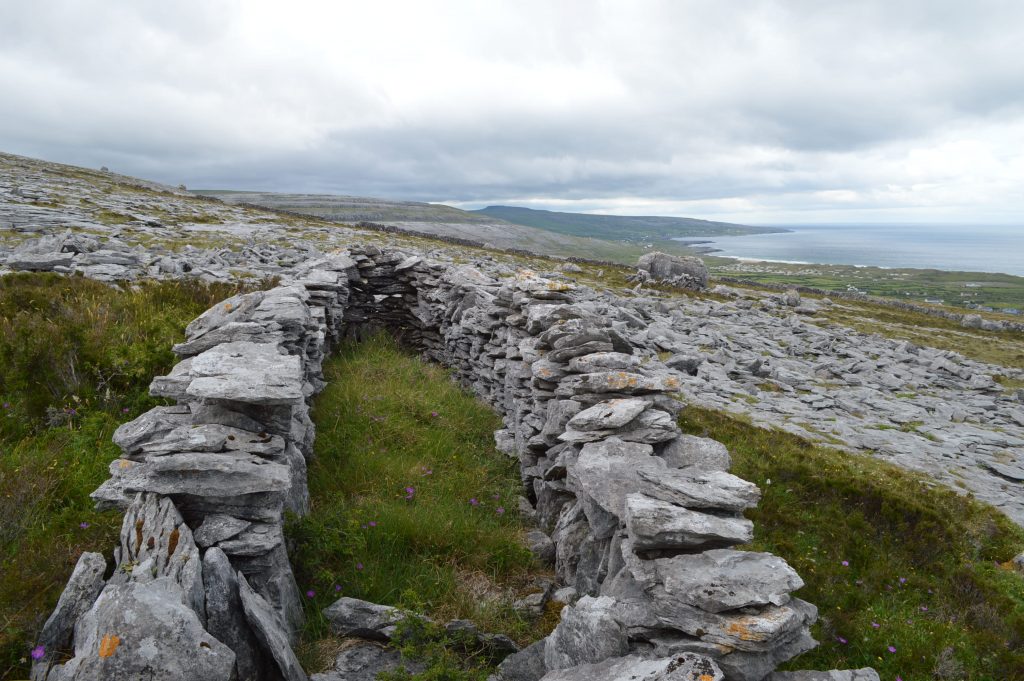
Doolin Caves at Burren National Park
Karst topographies are also well noted for their astounding underground formations. The calcium carbonate that is contained in limestone is susceptible to erosion from water and also fluids that are mildly acidic.
As a result, vast underground caverns can be formed due to underground water flows. Additionally, massive stalactites and stalagmites are found inside the caverns.
There is a natural cave formation called the Doolin Caves which is located on the western edge of Burren National park. It is definitely worth the effort to go and find it. There are guided tours to take you down into the caves.
The Great Stalactite at Doolin Caves
A most astounding feature of the Doolin Caves is the great stalactite which hangs a full 7.3 meters from the ceiling. As a result, it is the longest free hanging stalactite in the Northern Hemisphere. Stalactites take 1,000 years to grow 10 centimeters!
Therefore, since there is 730 centimeters in 7.3 meters this stalactite took 730,000 years to form!! Tours run from 10AM to 5PM at Doolin Caves during the season and they are easy to hook up with.
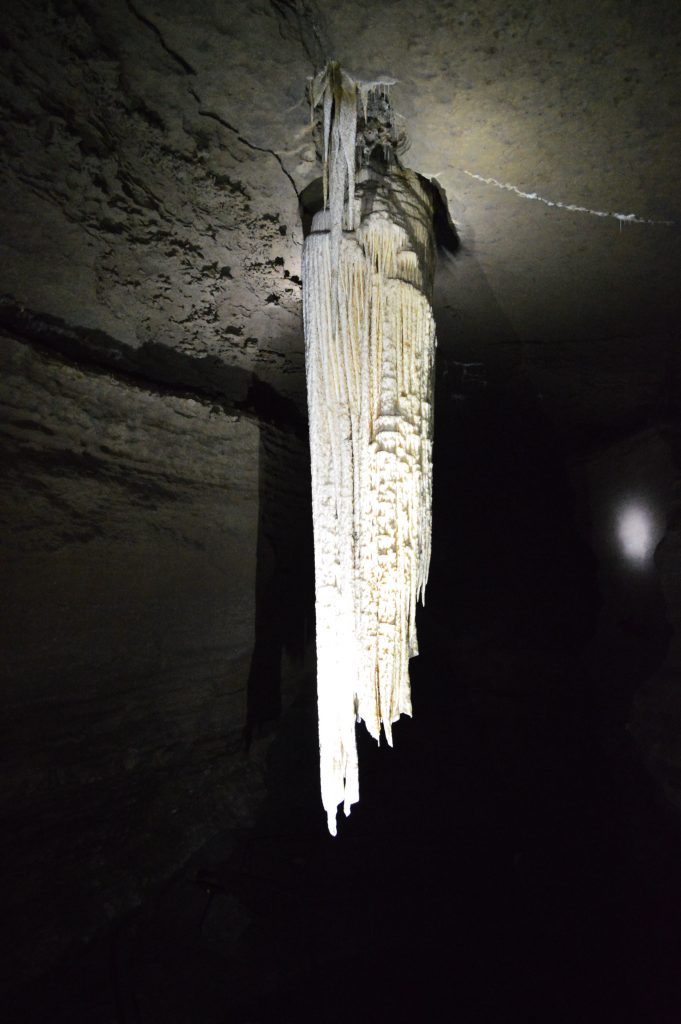
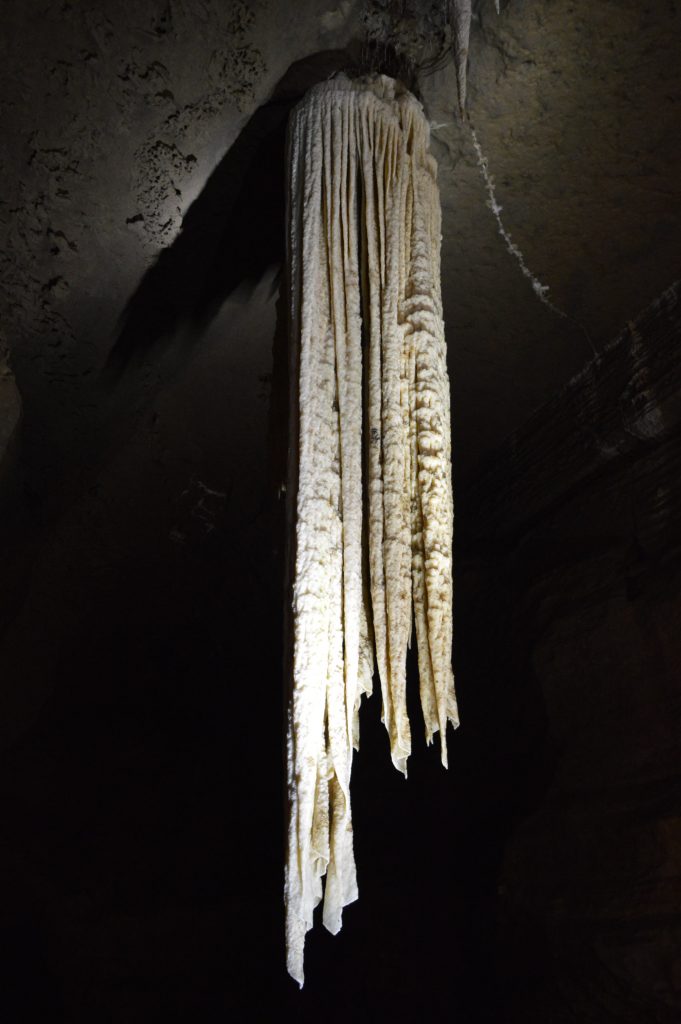
Other Attractions at The Burren
County Clare Ireland has many unique attractions and features. One prolific example is the Cliffs of Moher which I will cover more extensively in a separate post.
Furthermore, western Ireland has exposure to world class Atlantic ocean swells. As a result, there is world class surfing, if you are so inclined. Great surf spots are located right in Lahinch. However, it is freezing cold in the water and surfers must be well adapted to cold water surfing to survive here. Additionally, for the warm blooded land lubbers there is world class golf which is also located in Lahinch.
Other Recommended Travel Posts

